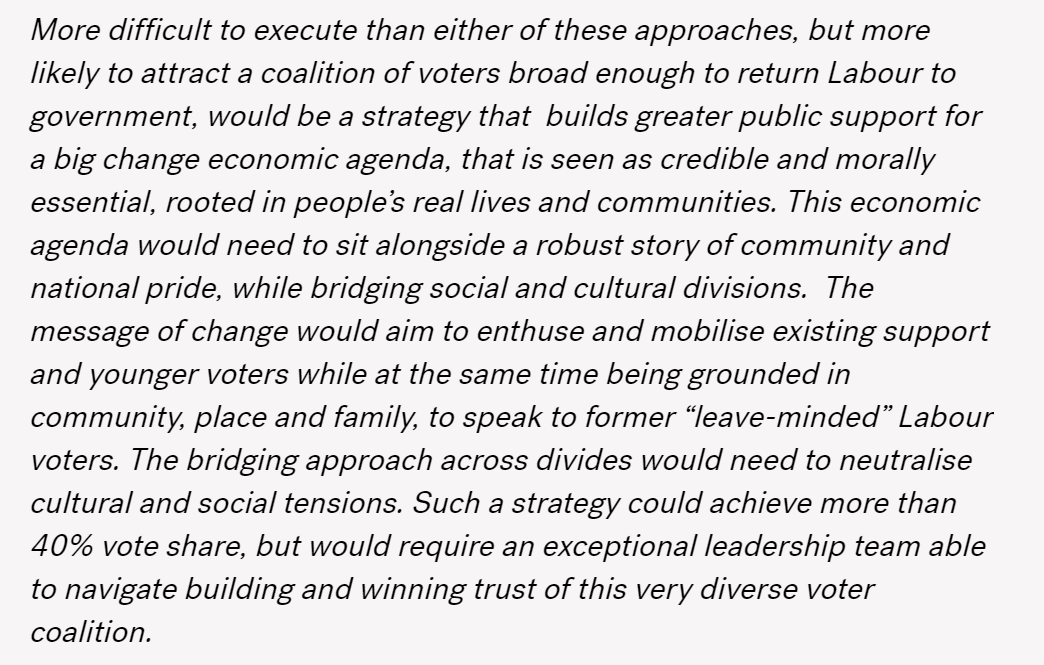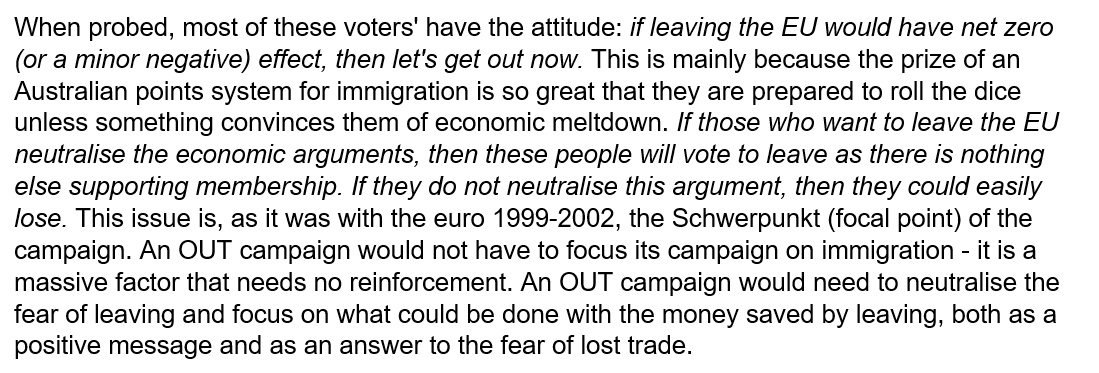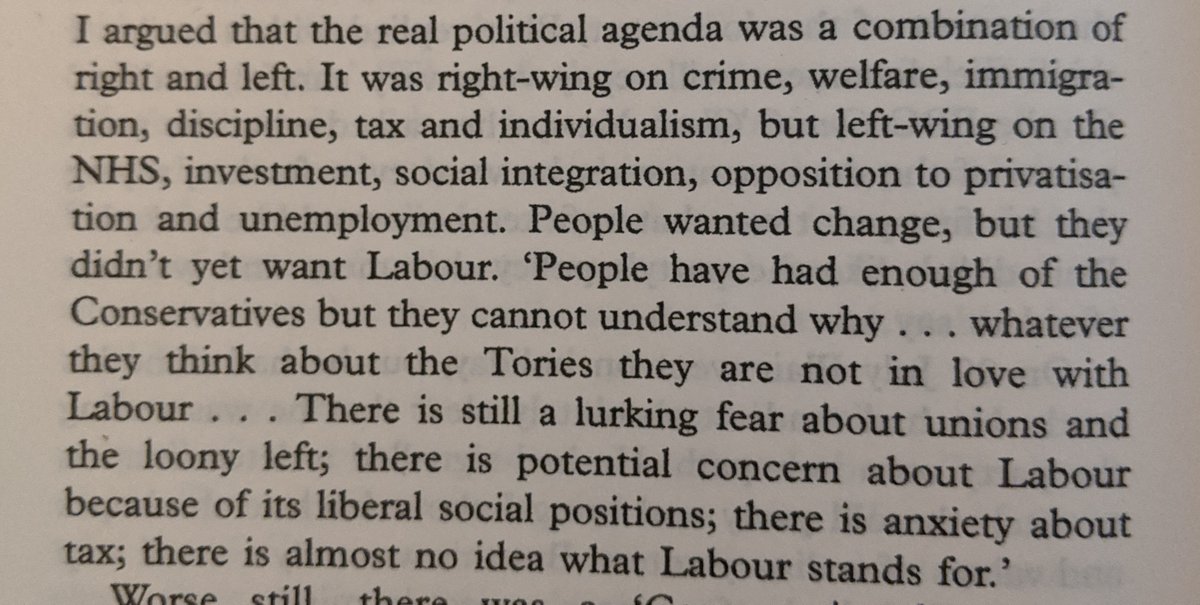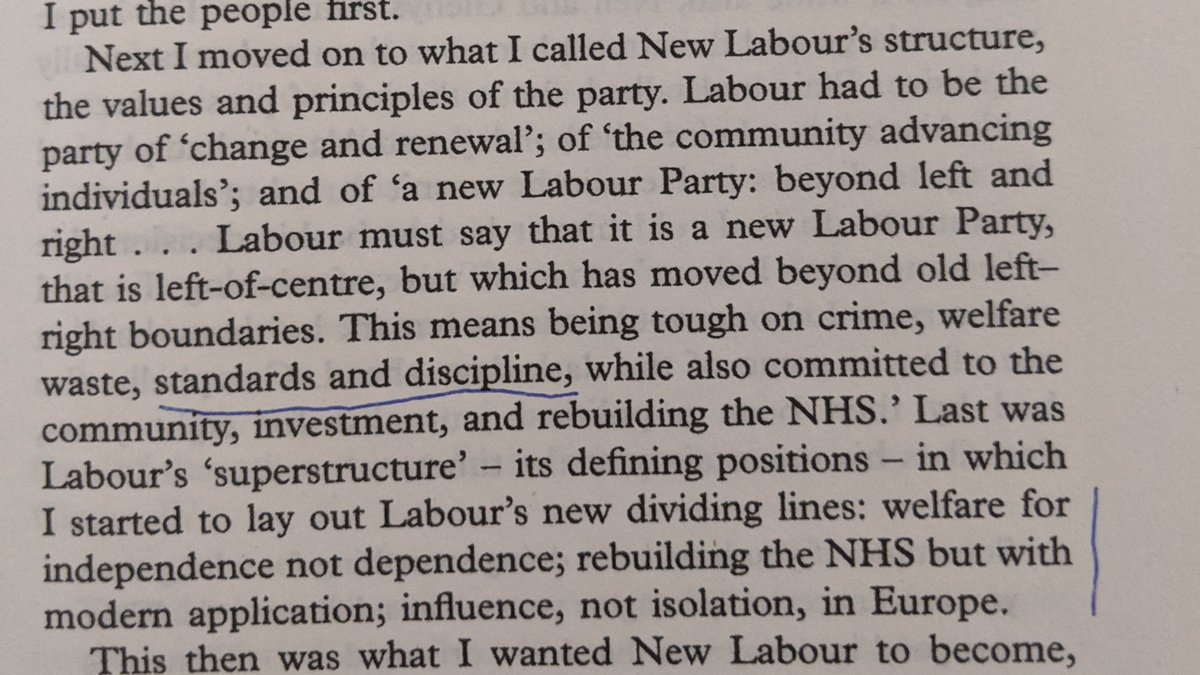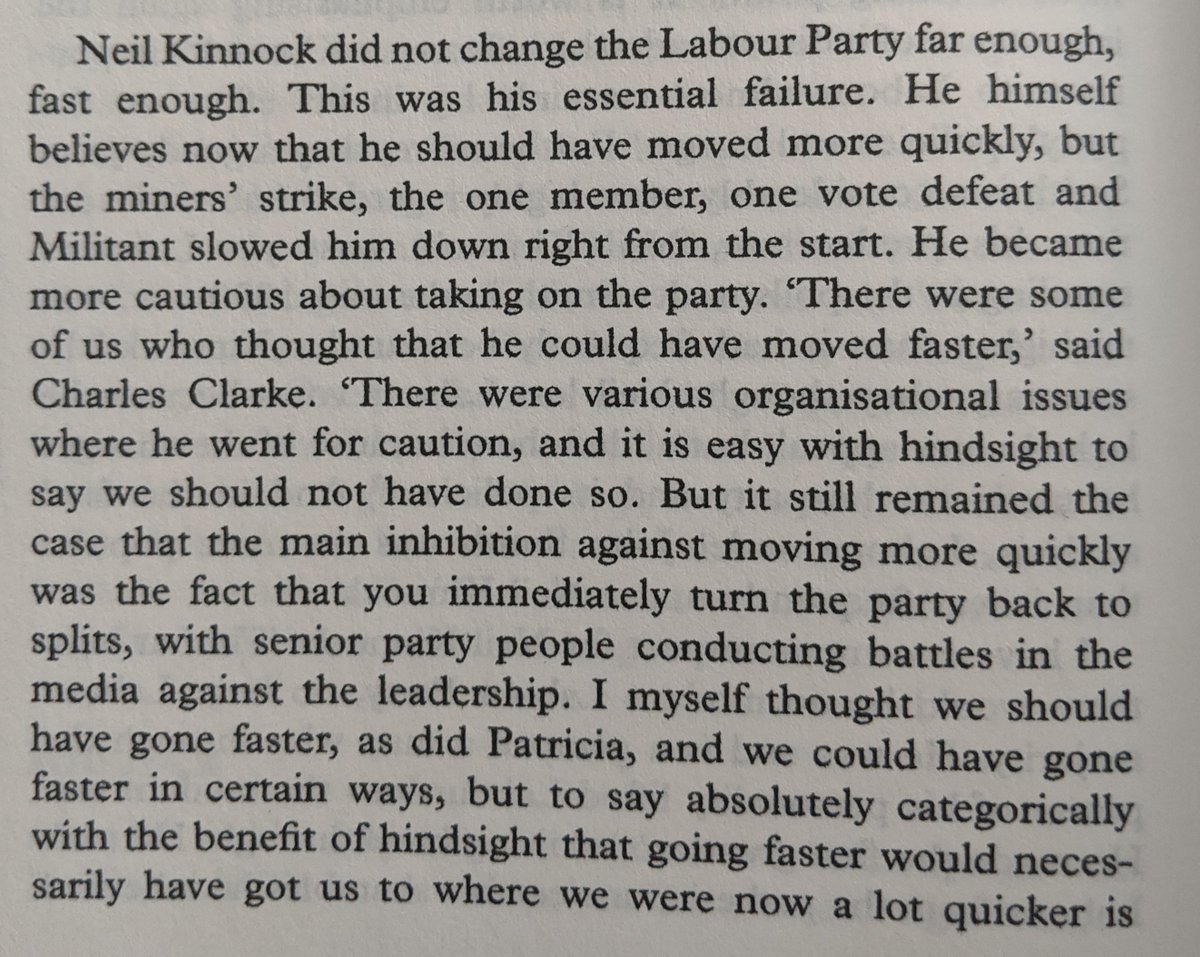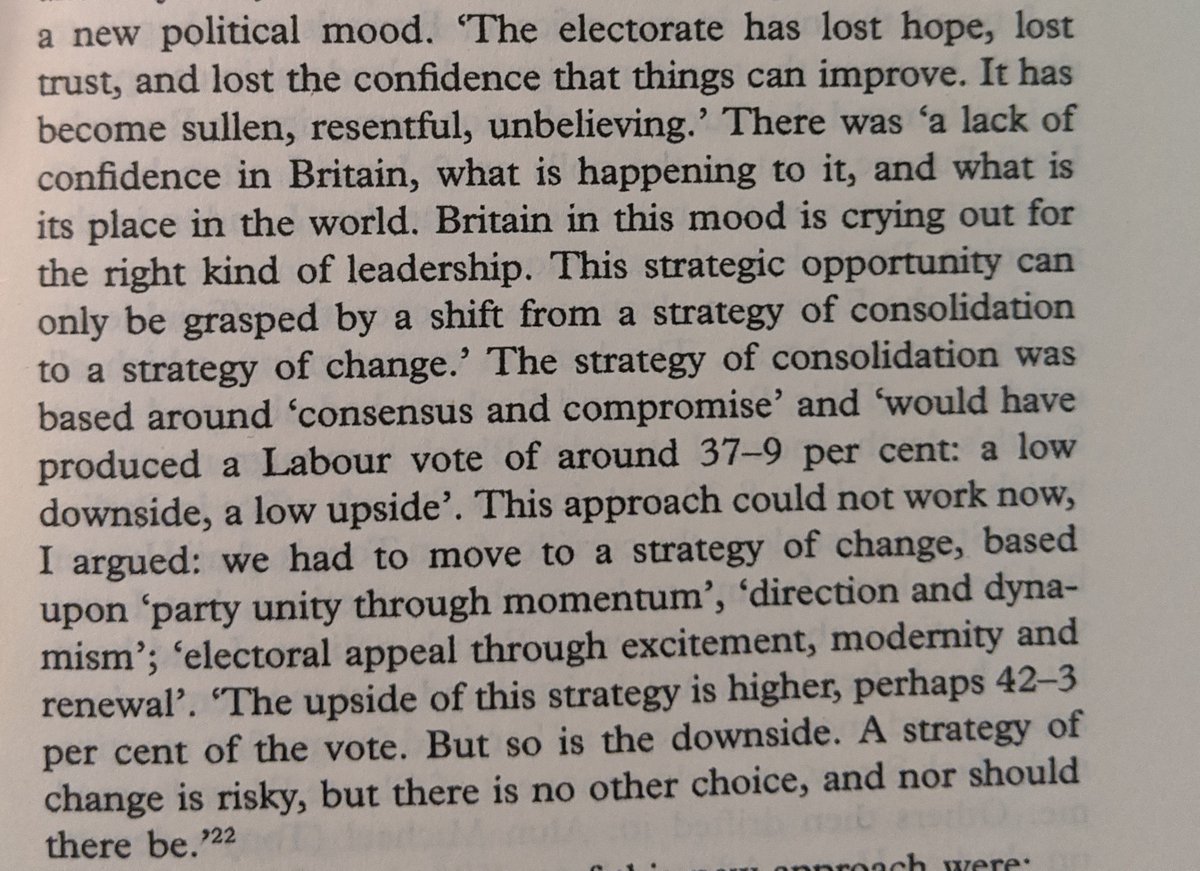My thoughts on the @LabourTogether report: very good at diagnosing the reasons for losing, but unlike comparable reports that led to victory, it leaves a gap for a coherent electoral strategy going forwards. This is what Labour really needs to win.
Benchmarks for this kind of report are Philip Gould’s post-1992 election review/memos and Dominic Cummings’ 2014 ‘Business for Britain’ strategy report, both of which directly led to electoral success.
The @LabourTogether report makes fantastic use of polling data to shed new light on why Labour lost – especially the granular analysis of voters by @DatapraxisEU with estimates for groups like non-voters.
However, the report is vague on proposals for a winning electoral strategy going forwards – passages like these sound a bit like ‘do everything, win everyone’.
Contrast this to the clarity of Cummings’ diagnosis of target voters and proposed strategy in 2014, 2 years before the referendum. He used the same kind of decisive strategy in 2019 with ‘Get Brexit Done’ + thousands more nurses/policemen. This is what Labour must match.
Philip Gould’s diagnosis and proposals after 1992 are similarly clear in describing the basic strategy Labour needed to implement to win. In fact, his substantive analysis of the electorate is similar to Cummings too.
Part of this is that the report limits itself in scope and recommends deciding Labour’s winning voter coalition and political strategy to build it as future work. But this needs to happen soon – Gould’s description of why Kinnock failed in 1992 is the cautionary tale
The key positive of the report is that it will help heal divisions by creating a broadly accepted narrative of why Labour lost. But Labour still needs a decisive electoral strategy going forwards or it risks floundering in the name of consensus. Gould& #39;s 1994 warning applies today

 Read on Twitter
Read on Twitter
